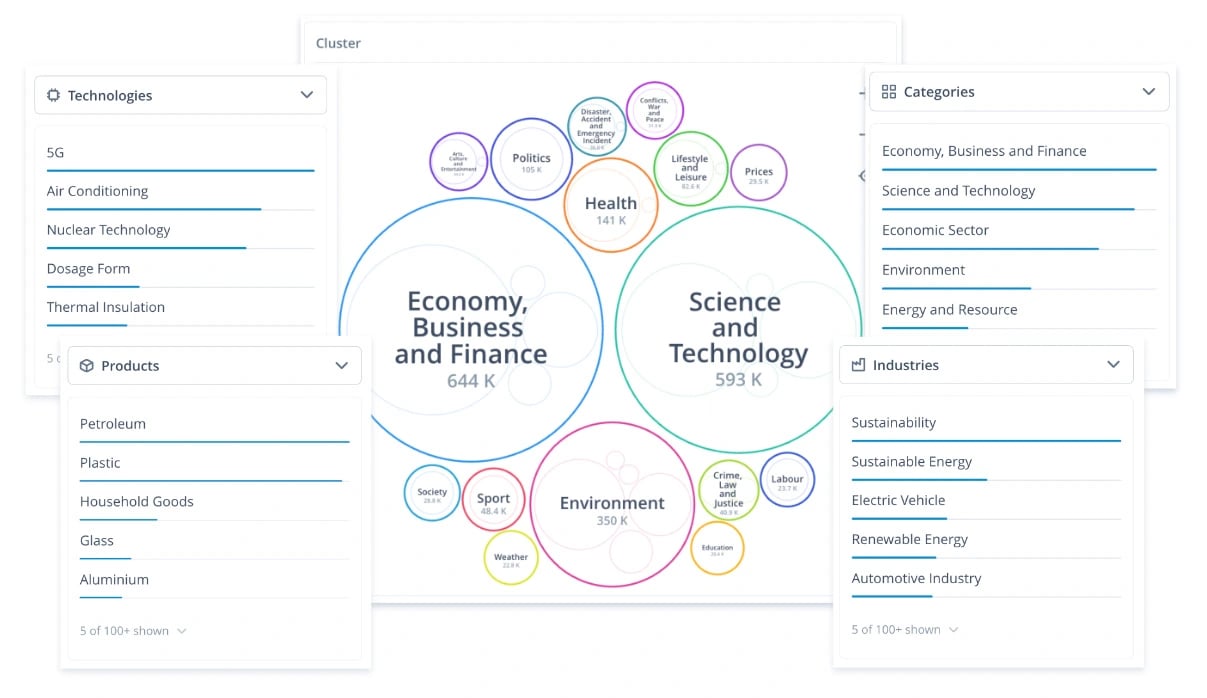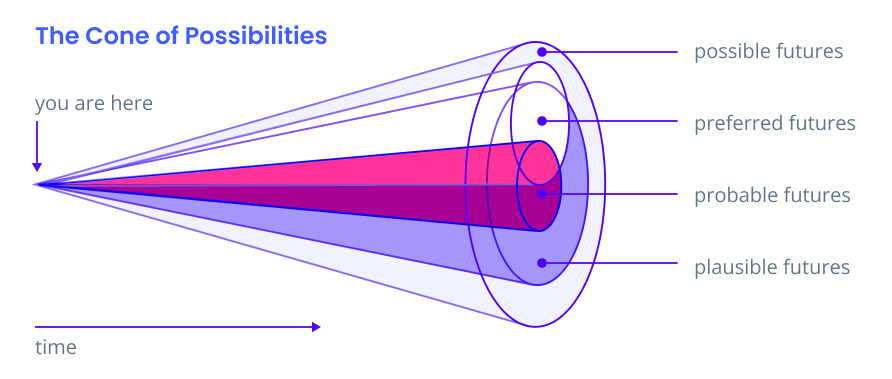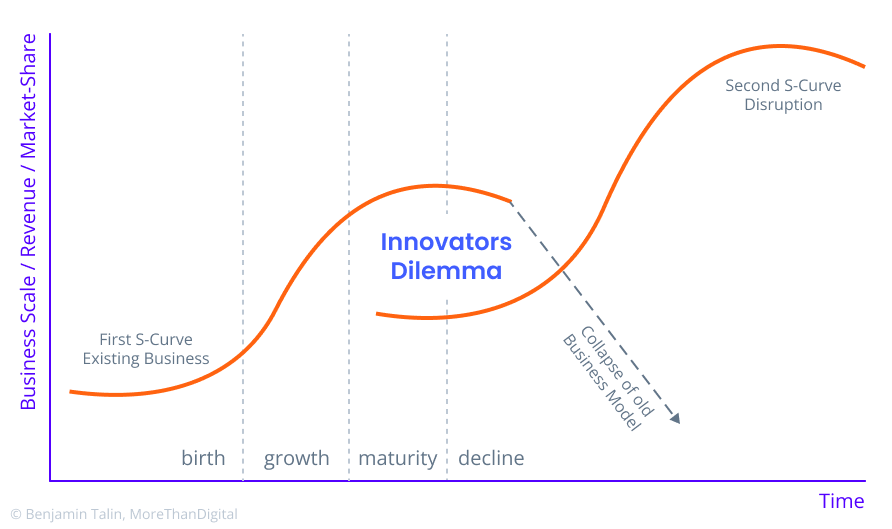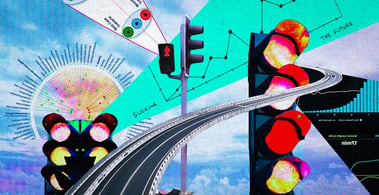With volatility, uncertainty, complexity, and ambiguity (VUCA) on the rise, the answer to “why foresight?” is increasingly clear. But the “how?” is where many organizations struggle. What internal capabilities are needed to establish and run an effective strategic foresight program in your organization?
We’ve partnered with and talked to foresight experts from industry-leading companies like Toyota, Dolby, Cisco, Intel, Mars Wrigley, and McKinsey & Company. What these companies have in common is a culture of innovation, enabling internal structures and processes, and a curated toolbox of foresight methods, tools, and techniques to boost future preparedness and shape growth systematically.
In this blog, we explore ten of the most powerful foresight methods to anticipate change and discover new business opportunities faster and more accurately than the competition. Read on to learn how operationalizing and connecting these best-practice methods in a single end2end operating system will help you shape a future-proof innovation strategy.
1. Scanning & scouting
Scanning and scouting are two foresight activities that organizations use to gather information about their external environment. Scanning provides the foundation by capturing a wide array of information, while scouting helps to identify emerging opportunities and trends that might not be readily apparent through scanning alone.
Often combined to create a more holistic view, scanning and scouting are essential for organizations to anticipate and respond effectively to changes in their industry and maintain a competitive edge.
2. Topic clustering
Topic clustering is a foresight method for identifying and categorizing relevant topics or themes within a particular domain or field of interest. Organizations perform topic clustering to uncover emerging trends and patterns, understand the interrelationships between different themes, and inform strategic decision-making.
Foresight teams first collect relevant yet diverse textual data through web scraping, accessing databases, or utilizing internal knowledge repositories. The data must be preprocessed to remove noise, allowing it to be converted into numerical representations for clustering and identifying underlying themes.
Use ITONICS Insights to automate and accelerate scanning, scouting, and topic clustering. Equipped with Natural Language Processing (NLP) technology, Insights scans and classifies millions of innovation-related data points in real-time. Interactive cluster visualizations instantly show the scope and contents of a search field by topic to help you arrive at actionable insights faster.
 Refine your signals search field using filters and cluster visualizations
Refine your signals search field using filters and cluster visualizations
3. Jobs to be done
The jobs to be done (JTBD) approach focuses on understanding customers' underlying motivations and needs. Implying that customers "hire" products or services to get a specific job done in their lives, JTBD helps organizations identify and develop products or solutions that effectively address these needs.
The first step is to identify the core job or task that customers are trying to accomplish and then conduct contextual inquiry to gain insights into customers' experiences and pain points. By outlining the steps and circumstances involved in getting the job done, organizations can develop solutions that address the identified needs and effectively convey their value proposition.
4. Radars
Radars organize foresight intelligence like emerging technologies, trends, startups, or risks in a centralized and intuitive view. A radar should be set up with predefined categorization criteria that display thematic segmentation, relationships, potential value, impact, and/or maturity levels.
Visualizing information on a radar provides a richer context to help organizations derive insights faster. It can also serve as a dissemination tool to raise awareness about strategic focus areas and support collaboration by inviting collective, cross-functional input.
.webp?width=1000&height=664&name=360-degree-view-Radar%20(2).webp)
Gain a 360-degree view of future-relevant forces of change impacting your organization
Use the ITONICS Radar to centralize your organization’s innovation intelligence and amplify the impact of your strategic foresight activities. The Radar allows teams to visualize and collaboratively rate drivers of change like trends, technologies, startups, risks, and more to develop a shared and focused vision of the future.
5. STEEP
STEEP is an analysis tool used to assess the external factors and macro-level trends that can impact an organization's future. It helps organizations identify and understand the various dimensions of their external environment to inform strategic decision-making and long-term planning.
The acronym STEEP stands for: Social, Technological, Economic, Environmental, and Political. The knowledge gained through STEEP analysis helps organizations anticipate potential opportunities and threats, adapt their strategies, and make informed decisions to stay ahead in a rapidly changing business landscape.
6. Scenario planning
Scenario planning is used to explore and prepare for potential future scenarios and their implications. It involves developing multiple plausible future scenarios based on different combinations of key drivers and/or variable data trajectories.
Scenario planning is particularly useful in complex and uncertain business environments where traditional forecasting methods may be inadequate. It helps organizations develop a forward-looking perspective, foster innovation, and build resilience by considering multiple potential futures. By embracing scenario planning, companies can better understand the challenges and opportunities they may face, improving their ability to adapt and succeed in a rapidly changing world.
Download our free Scenario Planning Toolkit to learn how ITONICS helps you develop and prioritize scenarios, identify innovation opportunities, and use roadmaps to integrate scenarios into your organization's strategy planning and execution.
7. Future cone
The future cone, also known as the cone of plausibility, is a foresight visualization tool that illustrates the range of possible future outcomes or events. It is often used in conjunction with scenario planning.
The future cone depicts a widening cone-shaped space representing the range of possible futures based on different scenarios. The cone widens to indicate the expanding range of possibilities, uncertainty, and alternative futures that emerge as time progresses. The broader part of the cone holds a larger number of plausible future scenarios, while the narrower part holds fewer probable scenarios. The future cone helps organizations understand the degree of uncertainty and explore potential outcomes within a given timeframe.

Use the future cone to visualize and comprehend a range of possible futures
8. Opportunity framework
An opportunity framework is a systematic approach used to identify and evaluate potential opportunities for a company. It helps in understanding the future business landscape, emerging trends, and disruptive forces that may impact the industry or market.
Organizations can use an opportunity framework for several purposes. By identifying new growth avenues and potential disruptions, it supports the development and adaptation of strategic plans. It is a common approach in new product development, market expansion, digital transformation, and risk management.
Download the Opportunity Space Canvas template to guide you through the process of visualizing key market trends and technologies, potential customers and markets, and strategic positioning—all in one comprehensive framework.
9. Tech S-curve
The tech S-curve, also known as the technology adoption curve or the technology life cycle curve, helps organizations anticipate the future trajectory of a technology, identify opportunities and threats, and make informed decisions about investments, product development, and market positioning.
The curve takes the shape of an "S" and typically consists of three main phases: introduction, acceleration, and maturation. By analyzing the stage of a technology on the curve, companies can adapt their strategies accordingly, such as entering emerging markets, investing in research and development, or preparing for potential disruptions or obsolescence.
10. Innovator’s Dilemma
The Innovator’s Dilemma, a concept coined by Clayton M. Christensen, refers to the conflict between the desire to maintain the status quo and the need to adapt to emerging disruptive technologies. It represents the gap or discontinuity between tech s-curves, as shown below.

The Innovator's Dilemma arises when companies fail to build a new S-curve
To address the Innovator's Dilemma, companies can establish separate entities or divisions with the flexibility to explore and develop disruptive technologies. By creating autonomous innovation units, companies can foster innovation without being restricted by the constraints of the established business. This approach allows companies to explore disruptive opportunities while maintaining their core business operations.
Build your custom innovation toolbox for foresight
At its core, strategic foresight is about taking in and processing information from the business environment to be able to uncover patterns, make predictions, and inform decision-making about the future. It’s not a magic ball but rather a methodical discipline that thrives when steps are clear, the process is collaborative, and information is well organized.
To get started, organizations need to identify the right mix of foresight methods that match their needs. Typically the responsibility of a Chief Innovation Officer, building a foresight toolbox requires careful consideration of the organization’s goals, specific challenges, and team capabilities.
Chief Innovation Officers and innovation teams can use the ITONICS Innovation Toolbox to help select the methods that will support their foresight process. The toolbox contains the methods mentioned here, along with many more best-practice tools, techniques, and concepts for elevating foresight practices, as well as ideation, innovation portfolio management, and innovation governance. Each method is interlinked with solutions, templates, and tips from the ITONICS Innovation OS to quickly put your innovation plans into practice.
Shape the future with ITONICS Foresight
Equipped with smart search and filter features, ITONICS Foresight automates the discovery of signals for you to move from data to actionable insights faster and uncover emerging opportunities before your competition. By aligning on a shared understanding of the future, you can develop a clear and realistic roadmap to move your organization toward your preferred future.
- Analyze your data in interactive visualizations to uncover meaningful patterns, relations, and blindspots.
Ensure greater stakeholder transparency by integrating trend and technology radars throughout the organization.
Accelerate decision-making by collectively evaluating drivers of change, startups, risks, and opportunities.
Save time with filtering that increases the ratio of relevant signals and automatically tags them by topic using machine learning.
Seamlessly connect environmental scanning to strategy, innovation, risk, R&D, and portfolio management.
The ITONICS Innovation OS is an end2end collaborative platform that links your strategic foresight activities with your ideas ecosystem and innovation portfolio. Creating a single point of truth for all your innovation intelligence and activities breaks down information silos and enables collaboration to help you better connect the dots between insights, ideas, and strategy realization.
Want to learn more about how you can future-proof your innovation strategy with ITONICS? Book a free demo and see for yourself!





